Electrician Blog
Great practical tips and advice on all things electrical from our expert Sydney electricians.
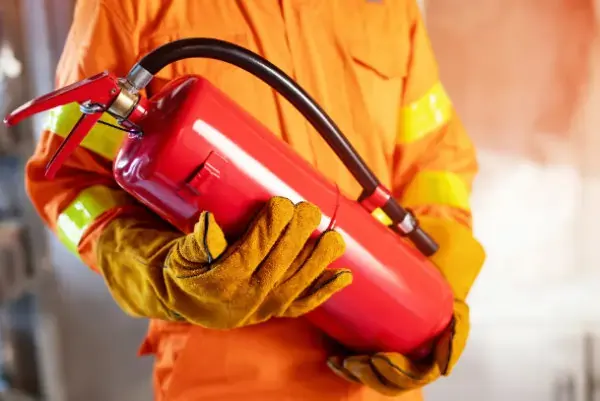
November 17, 2023
Are your Isolator switches putting your house at risk?
DC isolators are the leading cause of unsafe Photovoltaic solar systems in Australia. Unsafe DC isolators can lead to housefires and or system failure of your solar system. So what can you do to protect your home and what is causing these problems?.

August 8, 2023
Honest Intelligent solar repairer with all the equipment to detect and analyse the faults
Powerix aims to give the best service to our customers we can. We use the latest equipment to ensure we do the job right the first time. Below is an extensive review from one of our very happy customers. Not only are we proud of how happy our client is, but it also covers some key issues with the solar industry overall and answers many questions we typically get asked.
Honest Intelligent solar repairer with all the equipment to detect and analyse the faults
As the Australian solar industry has been operating for a couple of decades, many of the systems are now decaying and failing across Australia's rooftops. This represents a fire hazard posed by the shorting of high voltage DC. Look up high voltage DC arcing on YouTube – it is eye watering stuff. Many solar systems are now catching fire - especially at the DC Isolators. The old solar systems are also becoming an expensive fix due to failing components.
The Solar industry is corrupt and incompetent. Most Solar systems are not designed for maintenance or repairs. They are like modern TV sets - you replace them but never fix them. Many electricians are just sales people acting for the parent solar company that is only interested in selling you a new system. Most electricians do not have the necessary equipment to analyse the strings of solar panels on the roof to find the exact fault. They often limit their service to opening up the DC isolators, checking connections at the electrical box or selling you a new inverter.
The "Failed inverter" may not be the total story. Ask any electrician what the most likely cause of your failed Solar system is - the answer is always The Inverter. This is irrespective of whether you forked out $2500 for the German one or $1000 for the Chinese one. They make their money selling you a new inverter. Yes, they also make more money selling you a whole new system, but most people will baulk at that, after spending $10000 on the first one that only lasted 5 years. So they focus on the Inverter to open up your wallet and then incrementally ratchet up the bill as they later concede that it was something else. And yes Inverters can fail after few years. However, a quick Google search will reveal that the most common faults in failed solar systems are poor earthing problems somewhere in the system. Inverters are highly sensitive devices and reject poor DC signals coming in - before being converted to AC. That poor DC electrical signal is the result of many possible sources: bad connectors, poor corroded or water damaged solar panels, water damage in the DC isolators due to poor silicon seals or incorrect or upside down installation, or other earthing faults. Any or all of these UPSTREAM faults will give the dreaded RED LIGHT of failure on the Inverter. There may be nothing wrong with the inverter at all - it's just telling you that there is a problem in the system and that it refuses to convert the bad DC signal to AC. Or it could be the Inverter AND other problems in the system. Some Inverters reset (for a while) especially if there has been water in the system after heavy rain and after you give it time to dry out. Many inverters fail slowly from internal components and will continue to fail more frequently over time. And (yes) sometimes it is simply that damned expensive unreliable INVERTER that has failed with no other problems in the system. Good luck with Inverter or Panel warranties. If you read the contract, many will say that you have 10 years warranty "On Installation" only.
The solar system is not designed to be fixed. All it takes is for one dodgy component to play up and the whole solar system will fail. If one panel fails, the whole string of (10 say) panels will fail. Therefore the inverter will fail even though the other string of 10 panels on a 5KW system might be perfect. So, there may be 19 other panels working just fine but a big RED light on your inverter. Now, how do you find which panel has failed on that 2 storey steep slippery roof on a cloudy day with the wind blowing at 30 kmph. It’s ridiculous that they sell a product that was never designed to be rectified or maintained. Look at the roofs and installations of many solar systems. Many roofs are steep and complex - requiring a lot of safety gear to operate on. Sure, they will don all the gear for a $10000 installation. But do you really think that the average electrician will don all that gear to find a bad connector somewhere in the myriad of connections and wiring. Most electricians don’t even have the gear to do the analysis. Analysers are expensive stuff with the good analysers costing $20000. Each time they fiddle with a connector or component that has been sitting up there in the sun deteriorating, they risk breaking the part, just to have a look at it. The Solar industry is like buying a car and then having to replace the entire car when the battery dies. The car won’t start but they don’t want to analyse anything and just tell you it needs a new engine (the inverter equivalent) or replacement of the whole car.
In my case, after 3 years from solar installation, I noticed the RED Fault light on the Inverter. I rang the supplier and discovered that the slick salesman was now rude and obnoxious. He wanted nothing to do with fixing the problem. He said I was stupid and incapable of doing the reset written on the Inverter - even though I had done this correctly. He said he didn’t know how I could possibly carry out my day job since I was incapable of following instructions on the inverter panel. He was a real piece of work. I rang a local electrician and he discovered that a rat or possum had chewed through an electrical cable that went to a bedroom under the house. The solar system had been incorrectly installed and earthed to that very circuit of my main electrical board - what's the chance. That 10 minute repair cost $200 but at least they found the problem and at least it wasn't a failure of the Solar system - but it did highlight poor installation. The electrician "educated me" that, from his experience, most solar faults were from INVERTER Failures irrespective of BRAND or AGE. I later researched online that earthing faults were the main issue but they were more time consuming and more difficult to analyse.
Then after 9 years from purchase, I started getting the RED Fail light on the Inverter that would only reset occasionally. I tried hundreds of combinations of RESETS at different times of day, during rain, and on sunny days - I tried everything. I researched all of those annoying Inverter FAULT CODES and watched hours of YouTube videos from Solar repair guys. I learned that although Inverters often fail, the main cause of system problems was earthing problems due to system corrosion and deterioration. However, after a few months of accepting that my system was dead, I noticed that if there was a blackout in the street, the system would magically come back to life. After a blackout, my system would work all day and at the correct output without any reset by me. But then, the next day it would not reset - despite powering down my whole house in a vain attempt to replicate the blackout and nullify any earthing problems. I was reluctant to deduce it was an inverter failure because it worked all day at the expected output– when it worked. However, Inverters do partially fail and some fault codes are indications of the inverter being “on its way out”.
The solar industry is rife with dishonest and incompetent tradies. I had one company (Contractor 1) come out to my house and spend 10 minutes accessing the system. The young electrician merely opened up the DC Isolators but did no Megger analysis of the system to detect earthing problems - despite repeated requests from me to do so. He said the system was old and damaged and then quickly switched into sales rep mode for buying a whole new $10000. I paid the expensive fee but was very disgruntled with the incompetent and flippant service. I mean, I knew it was broken before he turned up, and all he did was say "yep it's broken". So, what did I pay for? How is that different to getting a free quote for a new solar system. Then I tried several electricians who didn't return the calls. Then I called Contractor 2 in Wollongong who charged me $hundreds to come out and take a picture of my electrical box and told me I had to replace all the wiring in the solar system. Then he never came back to fix anything after he got his payment based on him coming back to fix it. He would not even return emails. He just did a runner with my money. But to really rub it in, he sent me a voucher that said I had a 1 POINT voucher towards a holiday in some useless holiday rewards system. There were a lot of expletives coming from my mouth when I opened up that mail in utter disbelief. So, no fix to the solar but 1 point towards some infuriating holiday scam. You can't make this stuff up.
So, I tried to find an honest electrician in Wollongong without any luck. $400 was wasted on paying callout fees to useless immoral electricians who were on the job for 10 minutes, then never came back to fix anything - or only tried to sell me a new $10000 solar system.
Some solar electricians have worked out that it is simply easier to make money from turning up and saying "yep it's broken, that will be $250", rather than the inconvenience of rectifying anything. That is if you can get one to return your calls or even turn up. Imagine taking your car the mechanic and at the end of the day he says “yep it needs repair, that will be $250” without even opening the bonnet. So why is that immoral practice acceptable in some parts of the electrical trade? And yes I understand the idea of the call out fee, but the moral contract built into that fee is the agreement that there will be an attempt to actually do work and fix something.
So just when I had given up hope, I made a random and final search online for a solar repairer in Sydney. I came across POWERIX in Cronulla. They were very professional and patient in finding the cause of the problem. The electrician was tenacious in his analysis and always kept me informed of his progress every 30 minutes or so. The electrician owned an expensive Megger analyser that helped with the detection. In the end, the resolution came from tenacious deduction and problem solving beyond the limits of the equipment. The problem was multi-faceted: component failure in one string of panels and an inverter that was failing randomly and repeatedly. It took hours to come to this conclusion with lots of component isolation work and covering up panels on sunny days to work out which panel had failed. So (yes) in the end, it was my inverter that had failed, but replacing the inverter without fixing the upstream problems would not have worked and would have been an expensive mistake. He was a credit to the company and a great ambassador for the concept of the "honest tradie". He was an intelligent guy with a calm analytical manner. He communicated well and showed both humour and empathy with the problem. Powerix is a breath of fresh air in a highly corrupt and inept solar industry.
You can read the original review here: https://www.productreview.com.au/listings/powerix

April 21, 2023
Solar panels are set to become more affordable - but now is always the best time to switch to solar
Solar energy is becoming an increasingly attractive option when it comes to powering your home. In Sydney, more than 885,000 homes have rooftop solar, and in Australia 1 in 3 homes have gone green by switching to solar. Collectively homes and businesses in Australia have reached the impressive milestone of 6000-megawatt capacity. This achievement shows that there is a growing interest in solar energy, which is a positive sign for the environment and the economy.
Homeowners and businesses have benefited from government solar rebates and incentives to date, as these rebates have made it financially possible for many homeowners to convert to solar. At this stage, it is rumored that solar panel prices are set to drop, making the switch even more attractive. However, it's unknown exactly when these price changes will come into effect. If you have been waiting for the costs to reduce before going solar, why not look at the immediate benefits that you will gain by installing solar now?
The question is: do you switch to solar now or wait until there is a price reduction?
While it may be tempting to wait for further price drops in solar panels, it is important to consider the long-term benefits of switching to solar and the various incentives and programs available that can make them more affordable now. The benefits of switching to solar go beyond just cost savings.
The old adage “there's no time like the present” can be applied when thinking about switching to solar as it will help you save money on your energy bills, while also positively impacting the environment.
Reasons to Switch to Solar Now!
- Environmental Benefits - Solar energy is a clean and renewable source of energy. Unlike fossil fuels, it does not release harmful pollutants into the environment which helps reduce greenhouse gas emissions and combat climate change.
- Cost savings - Solar energy has become more affordable in recent years and the cost of solar panels has decreased significantly. Installing solar panels can help you save money on your electricity bills over the long term and homeowners may be eligible for tax incentives or rebates for installing solar panels.
- Energy Independence - Generating your own electricity with solar panels can help you become more energy independent and reduce your reliance on traditional utilities. This can be particularly beneficial during power outages or other emergencies.
- Increase Property Value - Solar panels can increase the value of your property. Many home buyers are now looking for homes with solar panels installed, which can make your property more attractive and sellable in the future.
Factors to consider when deciding whether to go solar now
- If you are primarily concerned with the cost savings and have the financial means to invest in solar panels, then it may make sense to switch to solar now. In many cases, the savings on energy bills from using solar energy can offset the upfront cost of the installation within a few years.
- If you are not yet in a position to make the upfront investment in solar panels, it may be worth waiting for the cost to reduce further or for additional government incentives to become available. It's important to consider your location and the amount of sunlight your property receives, as this can impact the effectiveness and cost-effectiveness of solar panels.
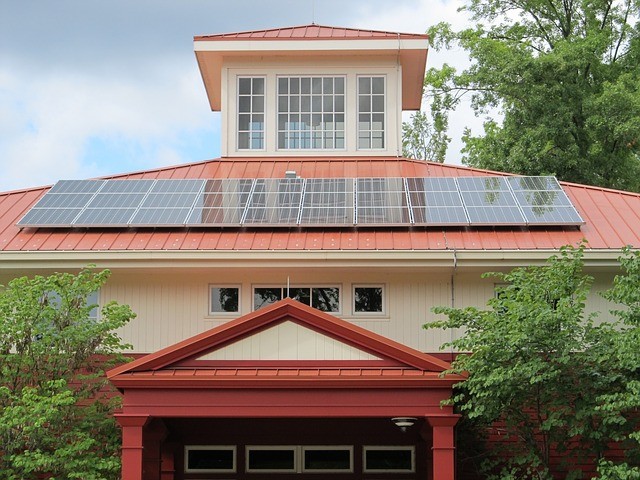
Ultimately, the decision to switch to solar should be based on careful consideration of your individual circumstances, and priorities.
Contact our Powerix team for more information about switching to solar on 0420 798 861 or complete our online quote request form.
Source: ABC News - Solar panel prices

July 14, 2020
NSW Leads Australia with Maximum Number of Rooftop Solar Installations
2020 was a bumper year for solar in Australia.
Australia once again broke its own record for the highest number of photovoltaics installed in a year. In 2020, the installations skyrocketed by a whopping 30% from the previous year.
362,734 rooftop solar PV systems were installed as per the data from the Clean Energy Regulator and analysed by Australia’s national science agency, CSIRO. Of this, NSW contributed with over 109,000 installations. The solar uptake is high in suburbs like Marsden Park, Vineyard, Kellyville, Rouse Hill, Camden and Oakdale.
The pattern of installation in NSW is significantly different from Victoria. In Victoria, the installation is focused on five postcodes whereas the installations are spread evenly throughout Sydney. This data is gathered based on the installation from the small-scale renewable energy scheme and construction data.
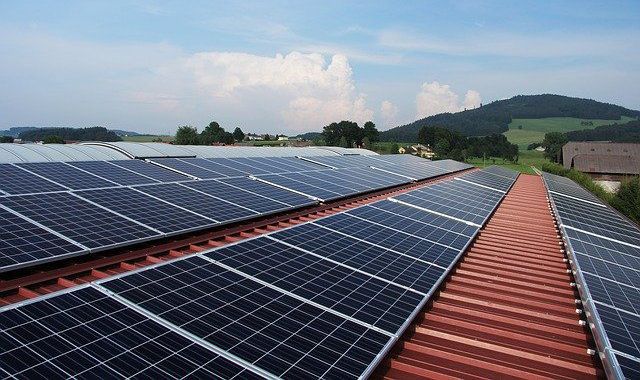
Australians are committed to reducing their carbon footprint and using renewable energy sources to power their homes. COVID-19 has also enabled homeowners to spend more time on home improvement projects. Rooftop solar power is forecasted to generate 32 gigawatts by 2030 and would eclipse coal.
“Sustained low technology costs, increased work from home arrangements and a shift in household spending to home improvements during COVID-19 played a key role in the increase of rooftop solar PV systems,” Clean Energy Regulator executive general manager Mark Williamson said.
Switch to Solar
At the end of 2020, Australia had over 2.68 million households with solar which means one in 4 households is now enjoying the benefits of solar energy. So what’s stopping you from getting solar? The goal of NSW government is to have net zero emissions by 2050 and you can contribute to this target by installing a solar PV system.
Switch to clean energy with expert solar installers at Powerix. We are experts when it comes to solar PV systems across Sydney, meaning we can help homes and businesses like yours utilise the free and abundant power from the sun. Our experienced team of CEC accredited solar installers offer the custom design, supply and installation of top quality solar systems throughout Sydney. For more information, contact us on 0488 856 928 or complete our online enquiry form .
References
https://www.industry.gov.au/sites/default/files/2020-12/australias-emissions-projections-2020.pdf
https://www.smh.com.au/politics/federal/nsw-leads-australia-s-charge-to-record-rooftop-solar-take-up-20210513-p57rp9.html
https://energysaver.nsw.gov.au/households/solar-and-battery-power
https://www.csiro.au/en/news/news-releases/2021/australia-installs-record-breaking-number-of-rooftop-solar-panels

July 14, 2020
NSW Smoke Alarm Legislation 2020 & what it means for you?
Did you know when you are asleep, your sense of smell is asleep too? You cannot smell coffee when you are fast asleep, and if your house is on fire, you won't smell the smoke either.
According to a study conducted by Macquarie University and Bushfire and Natural Hazards Co-operative Research Centre - more Australians are killed in residential fires each year than through natural hazards. The fatality rate from residential fires has remained steady over the past 10 years.
Although residential fires are deadly, they can be prevented with the help of working smoke alarms. Smoke alarms can save lives by detecting smoke and alerting the occupants within seconds. They can reduce the risk of death from residential fires by over 50%.
Modern homes have deadlier fires
Fires in modern homes spread faster (less than 5 minutes) compared to older homes wherein fire took over 29 minutes to spread throughout the building.
Modern building materials and furniture react differently to fires and create toxic gases and a higher level of smoke. This puts the occupants at grave risk of inhaling toxic fumes and allows less time to evacuate safely.
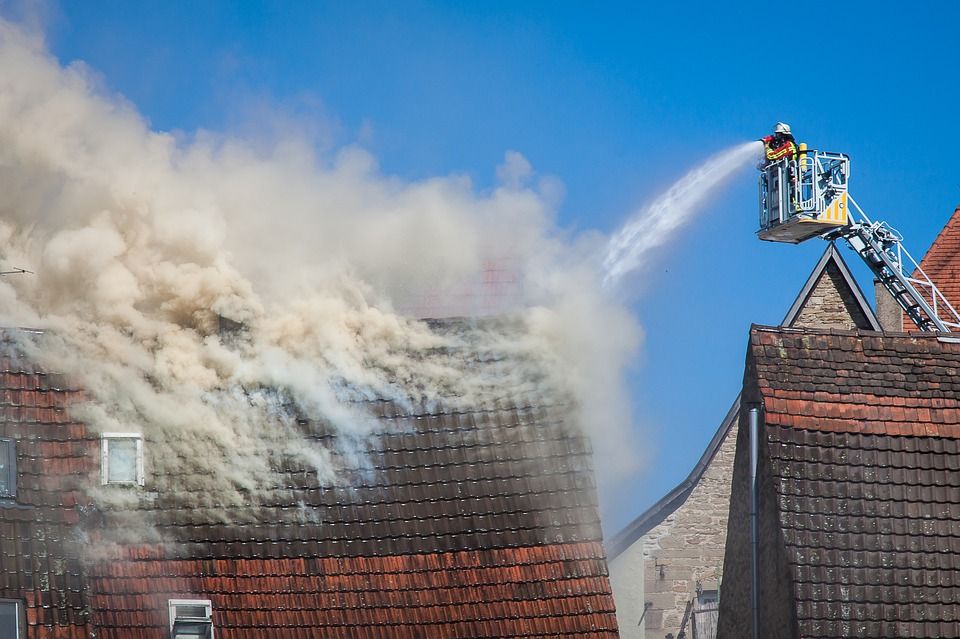
Advantages of smoke alarms
- Interconnected smoke alarms are preferable for homes so that if one smoke alarm activates, all the smoke alarms will go off so that the occupants have a better chance of evacuating the house quickly.
- This early warning increases the chance of a safe escape.
Types of smoke alarms
There are 3 types of alarms - Photoelectric Alarms, Ionisation Alarms and Dual Sensor Alarms.
Photoelectric alarms are faster at detecting smoke from burning synthetic materials while ionisation alarms are quick at detecting flaming fires. Smoke alarms are more effective when they are installed in appropriate locations, they are interconnected and more than one alarm is installed. The more smoke alarms in your home, the safer you and your family are.
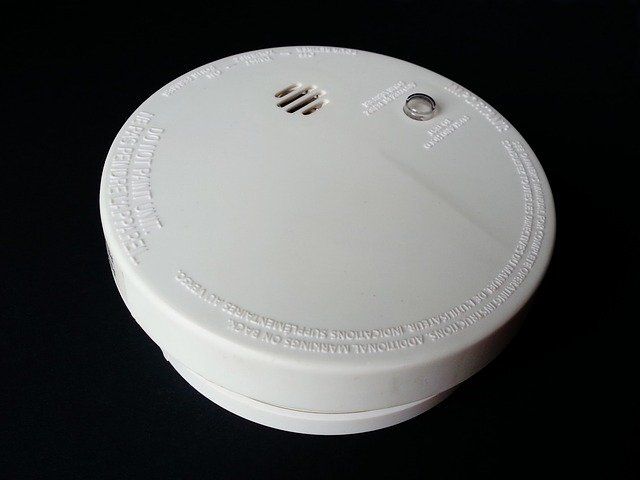
Smoke Alarm Legislation NSW 2020
- NSW legislation provides a minimum level of protection.
- Under Clause 146A of the Environmental Planning and Assessment Act, 1979 and Divison 7A of Part 9 of Environmental Planning and Assessment Regulation 2000, at least one smoke alarm must be installed on each level in all buildings where people sleep.
- Smoke alarms must comply with the Australian Standard AS 3786.
- Failure to comply with the legislation is an offence and you can get a maximum penalty of $550.
- Alarms installed after May 2006 should comply with AS3786.
- Fire and Rescue NSW recommends the installation of interconnected smoke alarms in all bedrooms, living areas and garage.
What does the NSW smoke alarm legislation mean for you?
If you are a homeowner:
Consider installing a smoke alarm on every level of your home. If you already have a smoke alarm, you do not need to replace the alarm. However, it is recommended to install interconnected smoke alarms.
If you are a tenant or landlord
- Landlords are responsible to ensure the property has at least one working smoke alarm on every level of the property.
- Landlords can access the rented property to install smoke alarms by giving 2 days’ notice to the tenant. Landlords need to replace a faulty smoke alarm within 2 days.
- For hard-wired smoke alarms, the batteries need to be replaced by the landlord.
- For a battery-operated smoke alarm, the tenant is responsible to replace the battery. If the battery cannot be changed, the tenant should notify the landlord as soon as possible.
Smoke alarm safety tips
- Install smoke alarms on every level of the home including the basement and every bedroom, living area, stairways, hallways and garage.
- Consider installing extra smoke alarms if you have a large home.
- Interconnected hardwired smoke alarms are better for maximum safety.
- Use home sprinkler systems to control fire.
- Test all the smoke alarms at least once a month.
- Fire blankets and fire extinguishers can also help you deal with small fires before they get out of control.
- Discuss an escape plan with your family so they are aware of what to do in the event of a fire.
- Install carbon monoxide detectors if you use gas appliances or heaters in your home.
How can Powerix help you?
Our electricians can provide you with expert advice on the areas where it is beneficial to install smoke alarms. We offer comprehensive smoke alarm solutions - installation, routine testing, and maintenance for homes and businesses across Sydney.

Speak to our team for more information on 0488 856 928 or complete our online quote request form.
References
- House fires kill more Australians than all-natural hazards
- NSW SMOKE ALARMS - IT'S THE LAW
- Fire Research Report - Smoke Alarms in Homes
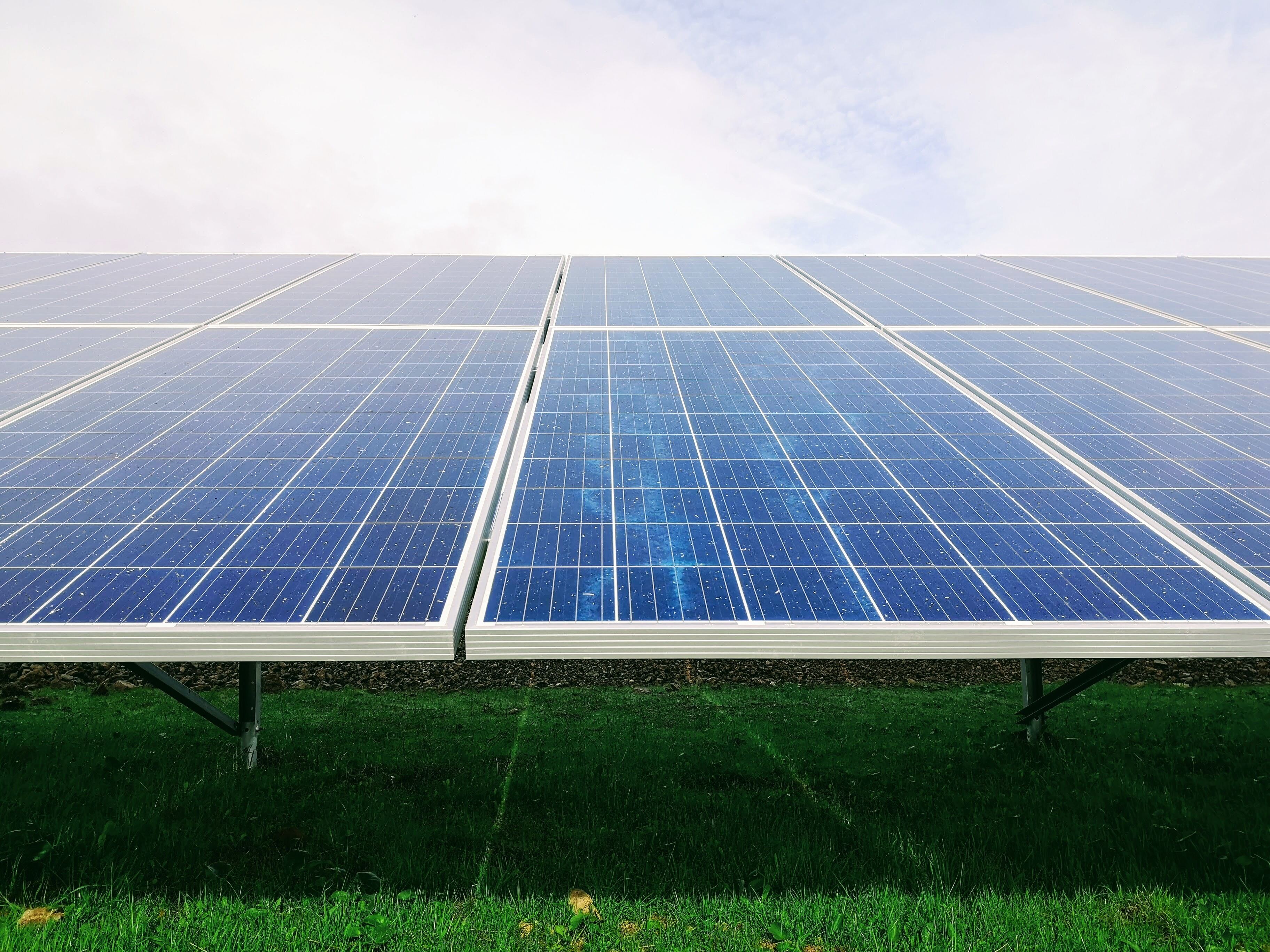
July 14, 2020
Solar Isolator Switch Recall: What you need to know
Have solar power at home or work?
Then pay attention, as an integral part of your system's functionality could be risking not just your installation, but much more.
The Australia Competition and Consumer Commission have recently released information concerning potentially faulty DC isolator switches.
* PLEASE NOTE: Powerix hasn't installed any of the isolators mentioned in this post.
DC isolator switches, used in the interests of safety, disconnect solar panels for the purpose of installation, repairs and maintenance.
The brands referred to in the Worksafe QLD release include:
- Avanco
- PVPower
- Gen3/SPM
- NHP
- ISO MAX
- Salzer Solar
If you have any questions about the below content, or solar power in general, the team at Powerix are here to help. Contact us on 1300 217 428 or 0488 856 928 .
Avanco:
Avanco brand DC isolators have been found to have internal faults, leading to overheating and fires. Sold in Queensland after 1 January 2012, the defective models include:
- AV/DC4P25A
- AV/DC2P25A
- AV/DC4P25AUB
- AV/DC2P625AU
- AV/DC2P25AU
- AV/DC2/2P25AU
- AV/DC2/2P125AU
- AV/DC4P25AU
- AV/DC4P25AUS
- AV/DC4P25AUT
A order for recall was announced for the affected Avanco isolators. The models subjected to recall have an enclosed rotary switch device; the switch is yellow, with a yellow background. The Avanco branding features on the front. It's worth noting that these isolators may have a marking on the external enclosure, containing the following numbers:
Clear Lid: AV/ENC4P25AC
Opaque Lid: AV/ENC4P25AO
PVPower branded DC isolators
The importers of PVPower brand DC isolators have announced a recall for the products.
PVPower isolators, like Avanco, are rotary types, and have a red switch with yellow background.
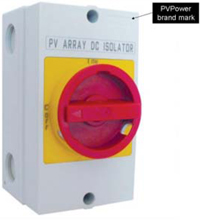
Gen3 or SPM branded DC isolators
The importers of the Gen3/SPM brand dc isolators are undertaking a voluntary product replacement program.
Gen3/SPM branded DC isolators are a rotary type, and have a red switch/yellow background around the switch OR a black background around the switch.
Look out for the brand logo on the top corner:
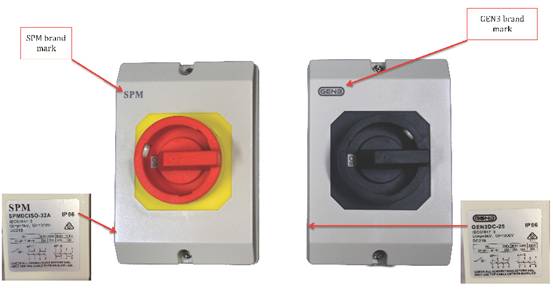
NHP DC isolators
NHP isolator models NHP-KDA-432 and KDM-43 have been found to hold an incorrect material, derived from the manufacturing process. A voluntary recall of these isolators gas been announced.
Defects include the switch staying on, despite the handle indicating the isolator to be off. This defect carries a risk of electric shock to the operator of the isolator.
The defective models have been identified as having serial numbers from x2013 - x3813, where X can be any number between 1 and 5.
You can find the serial number on the box and on the base. Note that the ‘X’ prefix only appears on the switch base.
ISO MAX Branded DC isolators
In 2012, the sellers of ISO MAX DC isolators triggered a recall, covering DC Isolators with the following model numbers/markings:
- Model No. LS16, DCISO 1000V
- Model No. LS25, DCISO 1000V
-
Model No. LS32, DCISO 1000V
ISO-MAX DC Isolators have a light grey body and a red handle.
If operating at currents in excess of 12A, models LS16, LS25, and LS32 are at great risk of overheating and potentially causing fire, even if they’re being operated properly.
Salzer solar DC isolators
The Salzer solar DC isolator switches can present a risk of fire under certain conditions when switched.
Subject to numerous recalls, the specific model is DCLB232, which is also known as IPV40E and IPV40ES.
If these isolators are identified, it is advised to shut down the AC side of the PV installation, then contact an electrician/solar expert.
_____________________________________________________________________________________________________
If your household has one of the mentioned solar isolators, worksafe queensland advises the system be shut down immediately.
If unsure of what model isolator you have, dig further by checking your isolator’s operating manual or invoice.
Still don’t know? Get in touch with your local electrician/solar expert.
_____________________________________________________________________________________________________
Resources used:
https://www.cleanenergycouncil.org.au/industry/products/product-recalls
http://www.solarpanelsmelbournevictoria.com.au/solar-power/solar-components/isolator-switches/
https://www.solargain.com.au/dc-isolator-recalls
http://www.cobaltsolar.com.au/DC_Isolator_Recalls
https://www.solaraccreditation.com.au/products/product-recalls/

July 14, 2020
Kitchen Wars: Electric or Induction
Cooking is an everyday task, but some days, we as wives have no desire to do it. Having to prep, cook, and clean up afterwards, is just one of those things that can drive us all a little crazy.
As a wife, there are days that I come home from work, look at my stove, think about the mess I am going to make, and I just give up and call for takeout. Some nights, I have no desire to deal with my stove and oven.
Every stove has its own way of cooking with some being better than others. Let's look at the difference between electric and induction stoves. We will look at the safety, ease of use, economy, and cleaning of each cooktop.
Sometimes a better stove makes a world of a difference!
Electric cooktops
- Safety: They are safe, but do have a downside. Unlike induction stove tops, these heat the whole element. This means that if your pot or pan is smaller than the heating element, you run the risk of burns. This just means putting a little extra elbow grease into cleaning.
- Ease of Use: These are simple to use but they can take a few minutes to heat up; fortunately, they get hot and stay hot. It can be tricky to change the temperature, but it only takes a few minutes.
- Economy: These tend to run cheaper than induction stoves. They are also simple to maintain since many people use them. Most people prefer them if they are looking for something long-lasting and easier on the wallet.
- Cleaning: Electric stove tops are easy to clean. They are easy to wipe off - just clean them like you would your counters. Just remember that food is more likely to bake onto the stove causing a little more work.
Induction cooktops
- Safety: Some models coming out have child safety locks built in. Your kids can't turn on the stove when you're not around! The stovetop also only sends heat to where it is needed. If the pot is a little smaller than the size of the burner, it only heats where the pot is touching.
- Ease of use: The heat is instant with induction, versus electric stoves, where you have to wait for the burner to heat up before it will heat the pot or pan. This will start heating up instantly which saves on time, heat loss, and energy.
- Economy: These stoves don't use as much energy as its electric counterparts. These stoves do tend to run at higher upfront costs than electric stoves do. Over time, they will pay for themselves, but there is a difference.
- Cleaning: The great thing about these stoves is that the heat only goes to the pot or pan. If you happen to overflow, the food will not get baked on as easily as on an electric stove. All you do is wipe off the stove like you would your counter.
It all comes down to your personal preference. Cooking for your spouse and family, cooking in general, should be fun and with minimal craziness. Having an oven and stove that you like to cook with makes all the difference. Be sure to do some more research and ask around. Find the one that's right for you!
Whether you are replacing an existing appliance, or undertaking a kitchen renovation Powerix Electrician can help you with the installation of your new appliances.
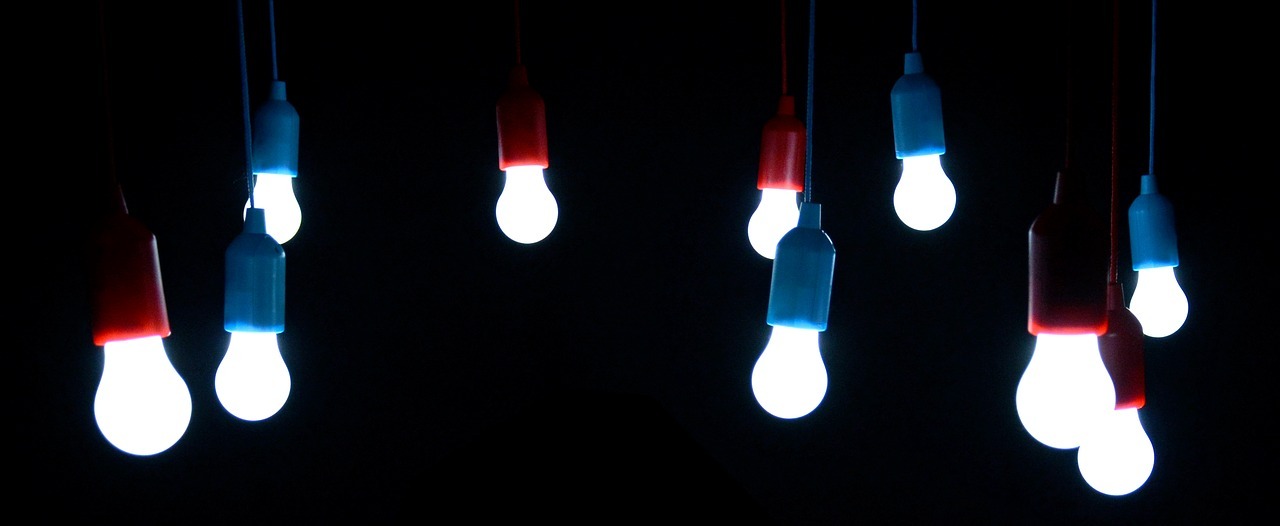
July 14, 2020
4 reasons why it’s important to think about colour temperature in lighting warm white, cool white, daylight
It’s amazing what a difference the color of a light can make in a room. It can really add to the feeling of the whole house. It’s surprisingly important to consider the colour temperature when you’re looking at the aesthetic of a room, and if you try out a few different looks, you might be amazed how much they can change the overall atmosphere. Considering the color temperature of the lighting in your in rooms allows you to optimize them for their intended activity, improving your productivity and your mood.
1) Open spaces:
One major reason to look at color temperature in your home is that it can help you get a brighter, more modern look. Choosing a color higher in the spectrum, such as cool white 4000K, will give spaces a sharper aesthetic, and brighten up dingy rooms, making them feel light and airy. This is a particularly good way to lighten darker spaces with smaller windows. For kitchens, studies, and bathrooms – where comfort needs to be coupled with a good working environment – a colder color will allow you to see what you’re doing and work more efficiently.
2) Color accuracy:
To further increase this effect, particularly if you have an art studio or display, you could look at daylight 5700K, which is designed to mimic daylight as closely as possible. Having good lighting while working on projects will make it easier to choose the right colors, ensuring that your art is in its best form; it’s not easy to paint a beautiful color picture in the dark.
3) Productivity
As well as increasing the sense of openness in your house, these colder lights will also help your productivity. Warmer lights are more likely to make you feel sleepy and relaxed, as they are closer to the colors of sunset, and trigger an increase in hormones, which make you sleepy. By installing cold lights in office spaces, you can ensure that your brain is functioning throughout the evening hours when you want to focus, rather than switching off for the night.
4) Promoting Relaxation
This obviously leads to a reverse situation; when you want to relax, you may want to consider warm light colors. As mentioned, some studies suggest that these warmer colors can make you sleepy and help promote regular sleeping patterns. This means that, for a bedroom or living room, you might want to look at warm white 3000K lighting, which will make the room cozy and relaxing, and may even help you wind down for sleep. This sort of lighting looks more conventional, and can really help turn off the mind.
By thinking carefully about the types of lighting in your home, you can make every room feel in tune with its purpose, keeping your productivity high and ensuring you are able to relax when you want to. The rooms where you are working, for example, the kitchen, will have sufficient lighting for you, and the rooms where you want to unwind will have the comforting yellow-orange of a beautiful sunset.
Whether you are replacing existing lights with new LED lights, or undertaking a home renovation Powerix Electrician can help you with the installation of your new LED lights.
